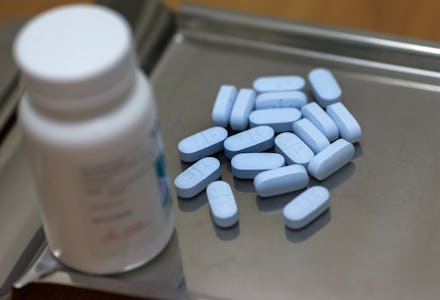California’s move to make HIV-prevention drugs more accessible is a big win for people of color

As California continues to lead the way in HIV treatment and prevention, it’ll be the first state to allow allow pharmacies to dispense PrEP and PEP (HIV pre- and post-exposure preventative medicine) without a prescription. The new law — signed yesterday by California Governor Gavin Newsom — also prevents insurance companies from requiring authorization before a patient receives PrEP or PEP. California’s plan to make HIV-prevention drugs available without a prescription is a huge step toward breaking down barriers to access for America’s most vulnerable individuals. Will the rest of the country catch on to this?
This law could allow people who are at a higher risk of exposure to be more in control of their health instead of relying on the sometimes mercurial whims of insurance coverage. That control is especially important for women and minorities, who are less likely to be insured and more likely to be exposed to HIV. Black Americans, in particular, are disproportionately affected by HIV, and as George Johnson, a gay, Black HIV activist observes, are more likely to forgo medical care for a plethora of reasons, including cultural stigma, medical mistrust, and lack of access.
California’s legislation follows a community consensus statement in May which demanded that the state’s lawmakers take steps to end the HIV epidemic in California. The statement, co-authored by over 150 organizations, emphasized the effect of HIV on minority communities, stating that “people of color are highly affected by HIV. Blacks have rates of new HIV diagnoses nearly five times those of whites.”
An analysis made by the California Health Benefit Review Program estimated that this new approach to dispensing PrEP would prevent at least 25 new cases of HIV in California in 2020. If that number seems small, take into consideration that the prevention of infection to those 25 individuals in the first year has a snowball effect in terms of exposure reduction. In other words, 25 people who have multiple sex partners or share needles with more than one person can expose a lot of people to HIV infection.
This law is a promising initial step, but it’s not a landslide. While folks with private insurance are often able to obtain PrEP with no out-of-pocket expenses, the cost of the medication is prohibitive, between $1,600 and $2,000 per month. California does have a PrEP assistance program, but it requires that patients jump through a lot of bureaucratic hoops, and it will ultimately only cover up to $7,200 in a calendar year. This new law allows people to access PrEP and PEP without a prescription, but it won’t lower the cost, so those who cannot afford almost $24k a year in treatment and don’t qualify for assistance will still go without.
The reality is that minority folks who are at risk for being exposed to HIV, fear the stigma of infection, don’t have insurance, and are more likely to face discrimination by healthcare providers could have a difficult time paying the high price of the drug. To counter this, the law contains a pay-for-delay clause that prevents drugmakers from paying other manufacturers to delay creating generic versions of PrEP. Generic versions of Truvada, PrEP’s brand name, are expected to arrive on the US market in 2020.
“CA is now the first state in the nation to give out HIV prevention pills to patients without a doctor’s prescription,” Gov. Newsom tweeted on Monday, “All Californians deserve access to treatments for HIV and AIDS. No barriers, no stigma.”